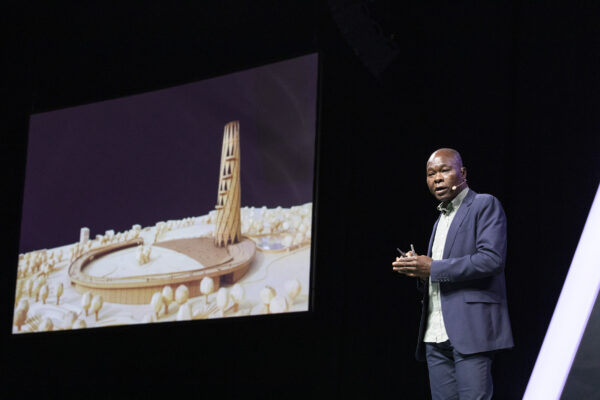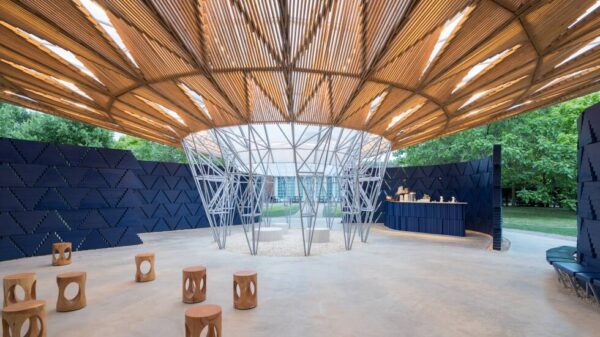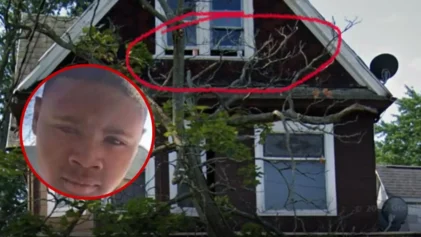A West African architect who won a prestigious industry prize makes it a point to build with local materials and artisans from his home country.
Diébédo Francis Kéré made history on March 15, as the first African-born winner of the Pritzker Prize often referred to as the Nobel prize of architecture.
When he pursued his dream to construct buildings, Kéré did not have awards in mind. Instead, he wanted to build a school in his village in Gando, Burkina Faso, where there was none.

“This is not just a prize for myself,” Kéré told CNN. “Without having the courage to go back home, and to get my people to join me on the journey to build the school that (launched) my career, this would never have been possible.”
Kéré, the eldest son of the village chief, was 7 years old when he first left home to learn. Equipped with a carpentry scholarship at 20 years old, he moved to Germany to further his goal. Kéré returned home and built the Gando Primary School in 2001.
The architect now owns a firm with locations in his hometown and Germany and has a career spanning multiple decades while using mud and clay instead of concrete and other local natural resources to construct his projects. Kéré’s portfolio includes schools, health centers, community facilities and national assemblies.
“The more local materials you use, the better you can promote the local economy and (build) local knowledge, which also makes people proud,” Kéré said.
He not only focuses his work on using resources that are readily available to locals, but he also ensures that the projects employ people in the community, increasing their benefits. Burkinabé was ranked 20th in the world for the lowest GDP per capita, CNN reports. Kéré makes it a practice to hire Burkinabé citizens to do the work, creating jobs in carpentry, welding, brick making, masonry and painting.

Some locals did not take well to Kéré’s concept. Critics are concerned that mud and other natural resources will not be as resilient as manufactured materials. Still, he remained solid in his model for self-sufficiency, self-pride and collaboration. He has expanded the school in his village, increasing capacity. He also has executed plans for a village library and teacher housing.
“There is still a feeling that everything that’s local is primitive,” he said. “Let’s say 90 percent of people in Burkina Faso use clay, but they see it as a ‘poor person’s material.’ So, when they have more money to spend, they try to look for other materials.”
His firm has completed about a dozen projects in Burkina Faso, and Kéré also took his home-produced strategy to other parts of Africa. His structures can be found from Senegal to Uganda to Togo to Sudan, according to reports.
“How do you make a project represent a nation? From a village to a nation state, you need to look around the country and ask, ‘Where do you have local and natural stone?’ … and then we go to source it, in order (not to borrow) a style from somewhere else,” Kéré said.
Kéré used existing baobab trees, shrubs and native grasses to design Benga Riverside Residential Community in Mozambique. He created the structure to keep people cool and protect houses from dusty winds. In Kenya, he built a children’s center from compressed earth bricks produced on-site.
Kéré’s designs are stretched across the globe, including in North America, Europe and China. In 2019, the architect designed a bundled pine log pavilion from dead trees in Fishtail, Montana.

For most of its 43-year history, the Pritzker has generally been awarded to celebrity architects and the brains behind iconic buildings. However, the selection committee stirred its focus in the past few years to socially conscious firms, most recently those who incorporate environment and community sustainability in their designs.
“He knows, from within, that architecture is not about the object but the objective; not the product, but the process,” Alejandro Aravena, Pritzker Prize jury chairman and 2016 winner, wrote of Kéré.
Kéré will officially be named Pritzker laureate at a ceremony in London later this year. He will be awarded a $100,000 grant and a bronze medal.


